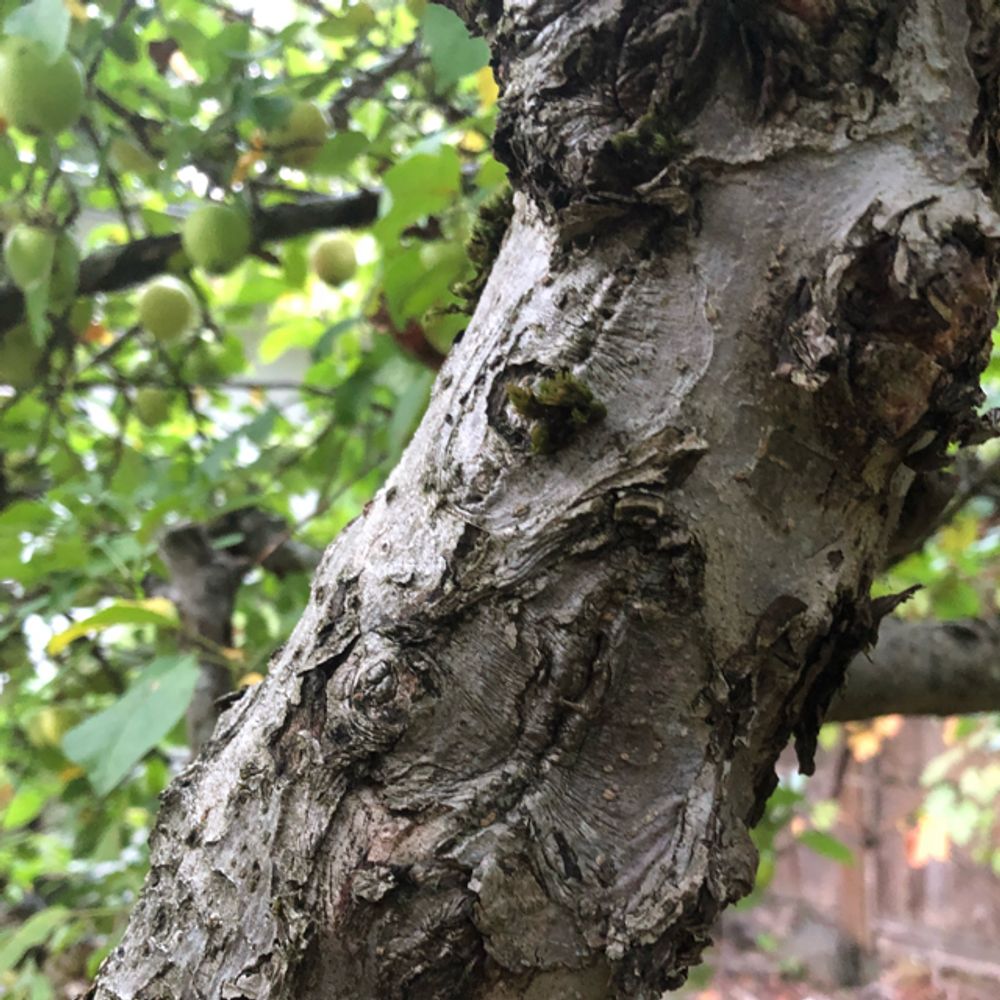Apple tree
(Malus sylvestris sylvestris)

Description
“Pet poisonous” – Toxic parts: seeds Malus sylvestris sylvestris, commonly known as the wild apple tree, is a deciduous species belonging to the Rosaceae family. It is a close relative of the cultivated apple tree (Malus domestica) and is native to Europe. With its captivating beauty, historical significance, and ecological importance, the wild apple tree holds a special place in the botanical world. This article aims to provide a comprehensive overview of Malus sylvestris sylvestris, including its taxonomy, description, habitat, cultivation, and cultural significance. Taxonomy and Nomenclature The scientific name of the wild apple tree, Malus sylvestris sylvestris, derives from the Latin words "malus" meaning apple and "sylvestris" meaning wild or woodland. It was first described by Carl Linnaeus, the renowned Swedish botanist, in his seminal work "Species Plantarum" in 1753. The species name "sylvestris" distinguishes it from other apple tree species, including Malus domestica, the cultivated apple. Description The wild apple tree is a small to medium-sized deciduous tree, typically reaching heights of 5 to 12 meters (16 to 40 feet). It has an irregular, spreading crown with dense branches. The bark is grayish-brown and becomes rougher and more fissured with age. The leaves are alternate, simple, and ovate-shaped, measuring around 5 to 10 centimeters (2 to 4 inches) long. They have serrated margins and a bright green color, which turns yellow or reddish in the autumn. Flowers and Fruits: In spring, the wild apple tree produces clusters of fragrant, five-petaled flowers. The flowers are typically white or pink, with a diameter of approximately 2.5 centimeters (1 inch). They attract a wide range of pollinators, including bees and butterflies. After successful pollination, the tree bears fruit in late summer or early autumn. The fruit, known as "wild apples" or "crabapples," is small and typically measures 1 to 4 centimeters (0.4 to 1.6 inches) in diameter. The color of the fruit varies from green to yellow to red, depending on the variety. Habitat and Distribution Malus sylvestris sylvestris is indigenous to Europe and is found in a wide range of habitats. It thrives in temperate climates, often growing in woodlands, hedgerows, and along riverbanks. The wild apple tree is known for its adaptability and can tolerate a variety of soil types, including loam, sandy, or clay soils. It prefers well-drained locations with moderate moisture levels. Cultivation and Uses While Malus sylvestris sylvestris is not as commonly cultivated as its domesticated counterpart, the cultivated apple (Malus domestica), it has unique horticultural and ecological value. Some horticulturalists have taken an interest in preserving and utilizing the genetic diversity of wild apple trees in their breeding programs. Ecological Importance The wild apple tree plays a vital role in maintaining biodiversity and supporting various ecosystems. It provides food and shelter for a wide array of wildlife, including birds, mammals, and insects. The nectar-rich flowers attract pollinators, contributing to the reproduction of numerous plant species. The fruit serves as a valuable food source for birds and mammals, and the decaying fruit provides sustenance for soil organisms. Cultural Significance and Folklore Throughout history, apples have held cultural significance in various societies. The wild apple tree has been a part of folklore, mythology, and traditional practices in many European cultures. It is often associated with fertility, abundance, and healing. In Celtic mythology, the apple tree symbolized immortality and the Otherworld. The legendary Avalon, a mythical island of paradise, was said to be filled with apple trees. In some regions, the wild apple tree has been used in traditional medicine. Different parts of the tree, including the bark, leaves, and fruit, have been employed to treat digestive issues, respiratory ailments, and skin conditions. The tart taste of wild apples has also made them a popular ingredient in traditional culinary recipes, such as jams, jellies, and ciders. Conservation Efforts The wild apple tree faces various threats to its survival, including habitat loss, land development, and competition from invasive species. Additionally, hybridization with cultivated apple varieties poses a risk to the genetic integrity of wild populations. Recognizing the importance of preserving this species, conservation efforts have been initiated to protect and conserve wild apple populations. These efforts include the establishment of protected areas, seed banks, and genetic preservation programs. Conclusion Malus sylvestris sylvestris, the wild apple tree, is a remarkable species that holds both botanical and cultural significance. Its elegant appearance, fragrant flowers, and small fruits make it a captivating addition to landscapes and natural habitats. From its ecological role in supporting biodiversity to its cultural and historical associations, the wild apple tree enriches our natural and cultural heritage. Continued conservation efforts are essential to safeguard the genetic diversity and ecological value of this fascinating species for future generations to appreciate and benefit from.
Taxonomic tree:







